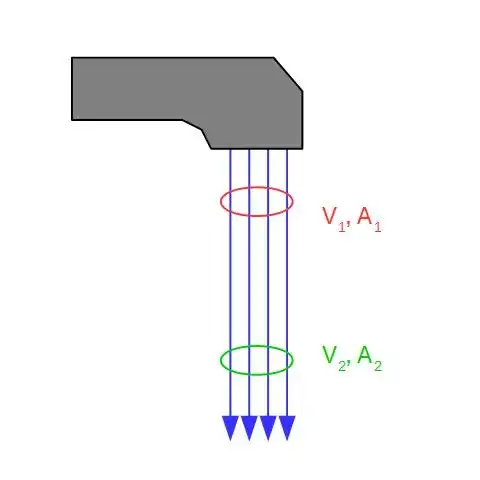There are two reasons for this, as follows.
First, surface tension tends to pull the jet of water together as it falls down, reducing its cross-section.
Second, the center of the jet is initially moving faster than the outer skin of the jet, and the flow is laminar. This also tends to urge the jet together rather than allowing it to spread out.
Note that this is true only for the case of a small jet that is moving relatively slowly, so that any aerodynamic effects are negligible.
Note also that once the jet has narrowed significantly, it becomes susceptible to a condition known as rayleigh instability, in which a tiny perturbation will cause the jet to separate into individual sphere-shaped droplets with a characteristic spacing or "frequency".
